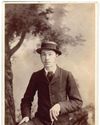Magnum’s Jacob Aue Sobol tours a landscape with a harrowing history.He talks to Oliver Atwell

The Kolyma Highway can be found in the far east of Russia. It cuts through the desolate Siberian landscape, where the severe temperatures can plummet to as low as -60°C and where, despite the seemingly inhospitable conditions, isolated communities living in towns and villages line the route and carve out an existence for themselves. It’s a landscape with a dark aura and one that is haunted by the ghosts of a gruesome past, for the Kolyma Highway is popularly known by another name – the Road of Bones.
Between 1932 and 1953, Stalin’s regime sent millions of prisoners to forced labour camps, or Gulags, in Siberia, where they would be literally worked to death. One of the largest tasks undertaken was the construction of the 2,031km Kolyma Highway. It was a painful and fatal labour that saw the deaths of countless prisoners. Their bodies, rather than being buried in newly dug holes, were laid beneath or around the road. Today, the road is a grim memorial to the fallen.
The isolated communities that exist along the Kolyma’s route form the backbone of a new project by Magnum photographer Jacob Aue Sobol, who worked in collaboration with Leica Cameras and who last month had 28 of his images on show at Photo London 2017. Jacob and these communities are a perfect fit. His work is famous for its stark black & white tonal range, its strangeness and its haunting intimacy. Despite the harrowing history captured in the Road of Bones, Jacob’s distinct aesthetic, shot using Leica M cameras, is able to draw out the beauty of the area and reveal the strength of the people who live there to this day.
This story is from the {{IssueName}} edition of {{MagazineName}}.
Start your 7-day Magzter GOLD free trial to access thousands of curated premium stories, and 9,000+ magazines and newspapers.
Already a subscriber ? Sign In
This story is from the {{IssueName}} edition of {{MagazineName}}.
Start your 7-day Magzter GOLD free trial to access thousands of curated premium stories, and 9,000+ magazines and newspapers.
Already a subscriber? Sign In

140 years of change
AP has become the world’s oldest surviving consumer photo magazine because we have moved with the times, says Nigel Atherton

Preserving history in platinum
A deep dive into the meticulous art of platinum printing, and the collaboration between the Royal Geographical Society and Salto Ulbeek. Mike Crawford explores how they brought historical photographs to life with enduring beauty and precision

Life in the past lane
What was life like for an amateur photographer in 1884? John Wade takes a trip back in time

Choice cuts
How many trillions of photographs must have been taken in the past 140 years? Amy Davies asked some of our regular contributors for their favourites....a difficult task, to say the least

How good a camera can you buy for just £140?
Three members of the AP team see what they can find for the money

Round Five: The Best of the Rest
The APOY judges choose their favourite images that didn’t make the top ten of our Landscapes category

Amateur Photographer of the Year
Here are the top ten images uploaded to Photocrowd from Round Five, Landscapes, with comments by the AP team and our guest judge

FILM STARS A lifetime of landmarks
Cameras that hit the headlines between then and now. John Wade is your guide

140 years of Amateur Photographer
As AP celebrates its 140th birthday next month, Nigel Atherton looks back at its glorious past

John Wade considers...World War II: Home Front 1940, by A.J O'Brien
Say the word 'Wall's' to those of a certain age and two things spring to mind: sausages and ice cream.